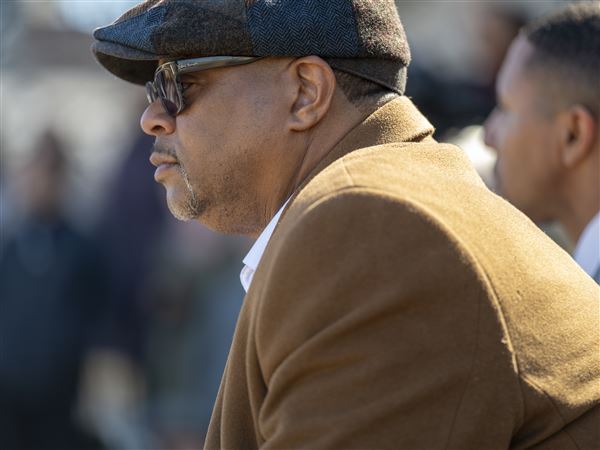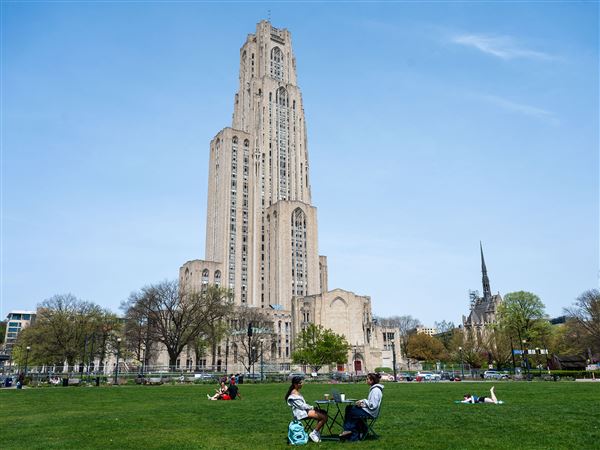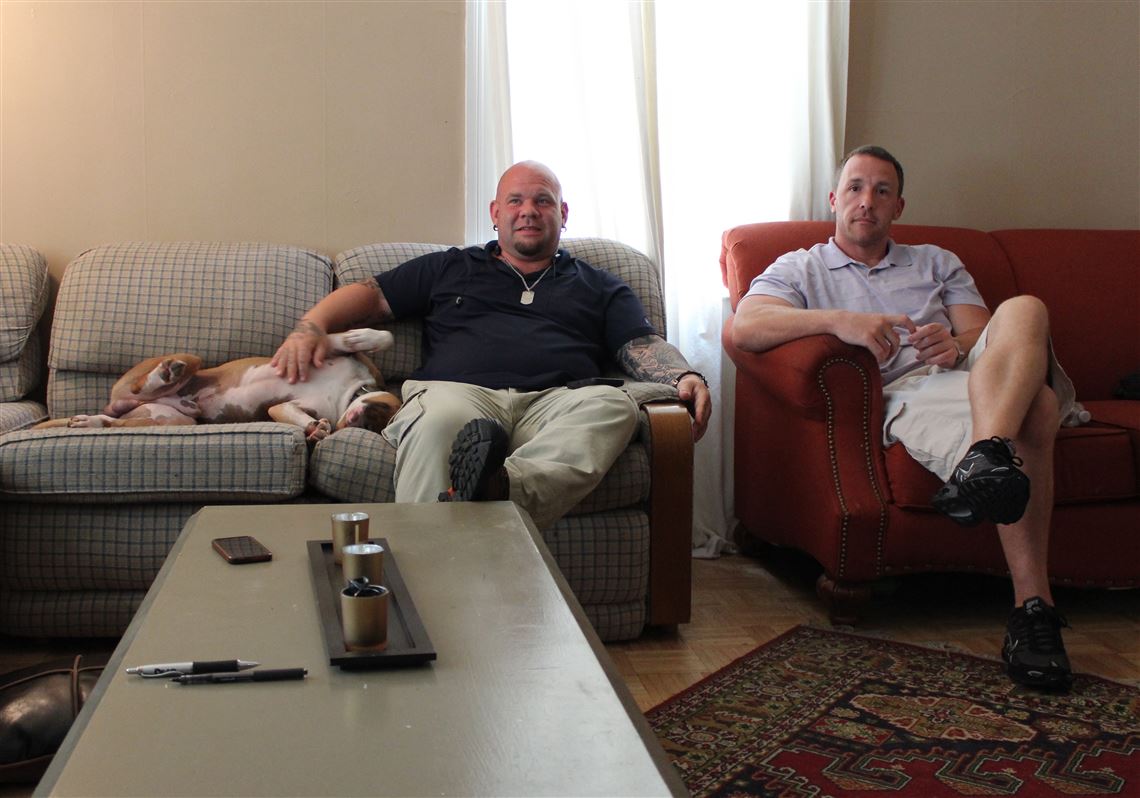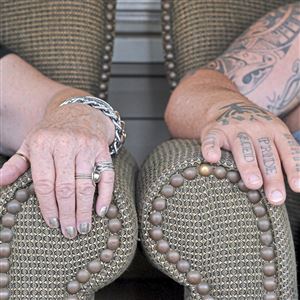On the wide porch of Hope House in Butler County, a dog named Odin barks at passing cars, greets visitors with raucous friendliness, and is part mascot and part therapy dog for the seven house residents.
Odin is the house dog at Hope House, a residence for people who have struggled with opioid addiction and are now in recovery.
“He gets stigma, too, because he’s a pit bull,” said Jason Beckwith, president of Hope House, affectionately nudging Odin with his toe. “This is the first dog I have ever owned. Before, I didn’t want to be responsible for another living thing.”
After living with a heroin addiction for more than a decade, Mr. Beckwith, 40, has been clean for two years and works as a certified recovery specialist. Three-quarter-way houses like Hope House are a relatively new idea, an intermediary between a rehab facility or halfway house and independent living back in the community. The municipality where this home is located is withheld in this story because of privacy concerns.
“It’s a frat house, basically,” Mr. Beckwith said, laughing.
Like a fraternity, the residents live together, squabble over chores and lounge on the front porch in fading armchairs they’ve brought outside from the living room. But instead of beer pong and parties, the men barbecue together, remind each other to go to meetings and speak intimately about their struggles reconnecting with family. At Hope House, staying clean is not the goal; it’s the expectation.
“I know that they truly understand where I’m at because they’ve been through the same things,” said Danny Nichols, 35, who has lived in Hope House for more than a month. “There’s a difference between sympathy and empathy. ‘I feel bad that you feel bad’ or ‘I feel what you feel’ — that’s two different things.”
At the house meeting every week, residents help each other set reasonable goals. Instead of “getting hired,” which may be outside their control, they might make goals like “send out 10 resumes” or “remember to go to my interview.” Similarly, they try to keep their goals concrete — instead of an abstract goal like “strengthen my relationships,” house members might suggest things like “remember to call my grandmother on her birthday.”
Half drill sergeant, half den mother, Mr. Beckwith lives in the house, organizes daily meetings and sometimes drug-tests residents without warning. But Hope House does not kick people out for breaking rules, like many rehabs and halfway houses do. Instead, the other residents would help someone who relapsed get into a more aggressive outpatient treatment and keep their progress steady.
“Me compiling on top of a relapse by now making them homeless, they’re just going to say well, why even bother,” Mr. Beckwith said, carefully spitting tobacco juice from his chew into a plastic water bottle. “And they’re more apt to go out there and possibly overdose and die.”
As a result, the residents feel like a team, a word all five residents who were interviewed used to describe their dynamic. One likened it to memories of college football, another to time spent with his brothers.
“I need a shove out the door from these guys to get up and go to meetings,” said another resident of the house. “I am dealing with emotions I’ve never dealt with, and now you’re throwing me in a room full of strangers? I need these guys to be there to have my back.”
The residents are part of a larger community called Action in Recovery, which connects people in recovery to community service. Almost 60 people organized by Action in Recovery helped residents affected by the July floods in Butler clean out their basements.
Some residents who had lived in other three-quarter houses — also called sober-living houses — said the discipline and community orientation sets Hope House apart.
“The other ones I’ve seen, typically the person running it is the person that owns it, and they’re almost never there,” Mr. Nichols said. “The last one I was in, we did whatever the heck we pretty much wanted. It would be weeks before the owner would even come in to see if we were all right.”
Mr. Nichols could not stay clean there, he said.
“It’s hard to get sober,” Mr. Nichols said. “The hardest thing is not the actual stopping of the use. It’s being able to stay clean because that really is emotionally torturous to go back and realize all those things you had done or said in addiction that went against your morals.”
Mr. Nichols has been clean for almost four months, a date he tracks proudly on his phone through an app called Sober Time. He is working on job applications and seeing his 10-year-old daughter more regularly.
Cars driving by the house often slow down so drivers can shout hello, tell a joke or wave to residents. Many of the greetings come from the extended Hope House community of recovering addicts in the area. Others come from community members thanking the Hope House residents for help during the recent flood, a sign that the hope is flowing both ways.
Amelia Nierenberg: anierenberg@post-gazette.com, 412-263-1370 or @ajnierenberg.
First Published: August 7, 2017, 4:00 a.m.

















